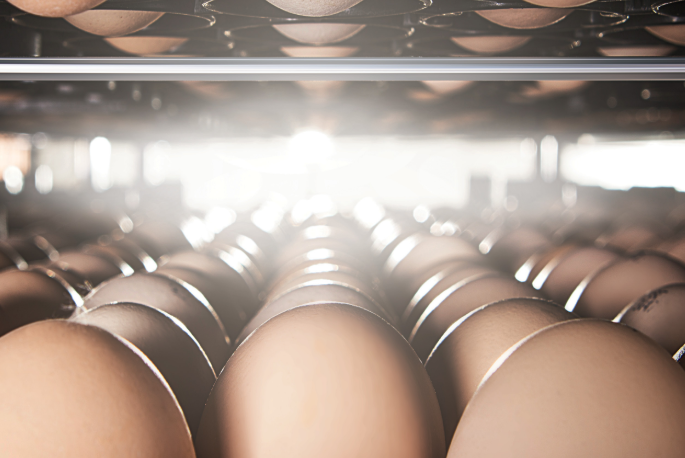



Fewer early deaths and better hatch results with the new Petersime incubation programme
Petersime is constantly rethinking the rules of commercial incubation by studying nature, which also means we continuously improve the incubation programmes for our machines according to the results of that research.Our recent key findings show it is beneficial to ventilate the setter in the beginning of the hatching process. As part of our customer service, the programmes are updated to optimise hatching results.
An interview with Senior Incubation Expert Roger Banwell
What was the rationale behind this research?
During the development of the Re-Store system and recent field trials with the latest Operational Excellence incubation equipment we noted a small but significant trend. The overall performance increased consistently but we often recorded small negative differences in one area of embryo development. We noticed that depending on storage time and whether the eggs had received Re-Store treatment there could be more very early embryonic deaths. Whilst not extensive the differences in 24/48-hour losses could range from 0.2 to 0.45 percent. This may seem little, but on a hatchery that does 1 million day-old chicks a week, we’re talking up to 4,500 chicks! Together with Ankara University we organised a research programme to investigate this phenomenon.

What did you find causes these early deaths?
At the point of lay an egg contains an amount of CO2. When stored in a cool storage room, the eggs slowly expulse this initial CO2 into their environment. During the early stage of incubation different CO2 concentrations play an important role on albumen characteristics and embryonic development.
The key findings of this research programme clearly showed that the albumen of the egg becomes less acidic at the same rate the stored egg expulses built up CO2 through its porous shell. There is a direct relation between the two. In the early stages of embryonic development, it is critical the albumen pH transition is not slowed. In such a case the CO2 would not be able to escape quickly enough and the albumen would become too acidic. This can halt development at this delicate stage and cause a very early death.
What can be done to prevent this from happening?
As usual we studied nature for the solution. Re-Store treatment will resolve the issue because it mimics the clutch building activity of the broody hen. By the intermediate warming of the eggs for a short duration during storage they release a degree of the stored CO2 like they would underneath a chicken leaving and returning to the nest.
Without Re-Store you could achieve the same impact when you ventilate the setter for a short period of 12-24 hours immediately following the warm up period.
This light ventilation is also additional security against potential damage from fumigation remnants. This doesn’t change the fact that you should always pay attention to good fumigation treatment and full extraction of the fumigant during this process remains paramount.
Does this mean the setter is not a closed cabinet during this time?
Yes, but it is important you run the setter as a sealed cabinet again following this brief period of passive ventilation. You will see the CO2 levels stabilising to a lower level and plateau. When the developing embryos have grown in the eggs and produce notable levels of CO2 you will notice the machine ventilating again.
As part of the ongoing customer support by Petersime the latest standard incubation programme available automatically has this short period of ventilation, as shown below. Download it from the service website and upload it to your incubators to optimise your results.









